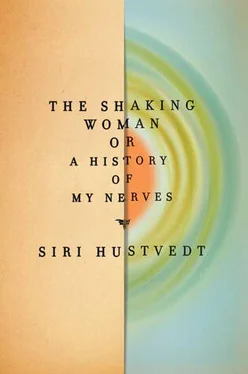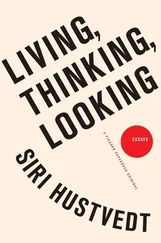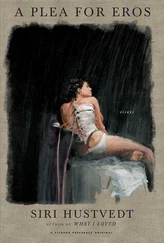In Pragmatism, William James makes a distinction between “tough-minded” and “tender-minded” philosophers, arguing that the two are temperamentally at odds. “The tough think of the tender as sentimentalists and softheads. The tender feel the tough to be unrefined, callous, or brutal.” 137As a pluralist, James will locate Pragmatism between the two, but the division he made remains valuable. Despite the looseness of these categories, they remind us of an ongoing division between styles of thought. (James, conciliatory in tone, nevertheless firmly believed that thought devoid of feeling was perverse.)
For a long time, I read only modern European philosophers and ignored the Americans and the English. When I got around to reading Anglo-American analytical philosophers, I found myself on a new planet. The Analyticals, as I call them, like to put forth truth conditions and logico-mathematical formulas that explain the way things are, as if the shifting stream of life is a game of true and false and human experience belongs to no one. They are fond of thought experiments that feature zombies (they look and act just like us but don’t have consciousness). They also tell and retell the story of Mary, the brilliant neuroscientist who lives in a black-and-white box and knows all there is to know about color and the brain. One day, she leaves her box and sees a red flower. Does she see anything new? These games are not meant to be about the actual world or our living in it. They are meant to make us think abstractly about a philosophical problem. I know it is cheating to say I feel that another person isn’t a zombie when I sit across from him in a room and look into his eyes, and it is probably also cheating to wonder how color deprivation for all those years would have changed both Mary’s brain and her personality, so that by the time she left her room, it might be hard to know what she would see in terms of color and, furthermore, if she had a brain like mine, would she then know that she had to shun a particular shade of turquoise? And what does knowing all there is to know mean? Does it mean knowledge from books? Does it include the fact that color acts on us pre-consciously before we’re able even to name the color we’re seeing? 138
These philosophers are the men and women (more men than women) of Kiesewetter’s Logic, the schoolbook Iván Ilých returns to in his mind during the last days of his life. They do not all agree about Mary’s experience of red or about the nature of consciousness. They quarrel loudly among themselves, and I am drawn far more to the ideas of some than of others. The philosopher Ned Block, for example, has found himself increasingly interested in the mysteries of neurological illnesses as he wrestles with a biological theory of consciousness. Unlike Daniel Dennett, who does not believe in qualia, 139Block takes phenomenal experience seriously and does not think it can be explained away. In an interview, he speculated that philosophers who do not “appreciate” phenomenology may, like the poet-translator I met, lack the ability to produce visual imagery, a thought that echoes my own about the engineer who refused to accept that empathy exists. 140William James, however, would no doubt have put all the Analyticals in the “tough-minded” camp. I am not opposed to reason or logic. It is the ground for consensus in most disciplines, essential to our collective conversations, and it is not that I am unimpressed with these writers or even that they are always uncompelling but, rather, that when I read them, I often feel a chill.
Every once in a while, that coolness turns ice-cold. Peter Carruthers, an Oxford-trained philosopher, defines consciousness as the ability to have second-order beliefs — that is, to be able not only to have experience A but to know that you are having experience A. The consequence of this idea is that if animals cannot do this, they are unconscious.
Similarly then in the case of brutes: since their experiences, including their pains, are nonconscious ones, their pains are of no immediate moral concern. Indeed, since all the mental states of brutes are nonconscious, their injuries are lacking in even indirect moral concern. 141
Carruthers’s thinking is nothing if not logical. Once the first idea is accepted, the second follows. While some of us may wonder why animals who learn to avoid painful stimuli in a laboratory should be thought of as unconscious or ask, further, why pain would be significant only when it can be reflected upon or represented— Gosh that hurts. I am having pain —this is outside Carruthers’s argument. For Carruthers, “consciousness” occupies the same position “spirit” did for the seventeenth-century occasionalist philosopher Malebranche. This Cartesian thinker believed that because animals had no souls and only through our souls and God were human beings able to experience mental states, it followed that our purely material animal cousins could not experience pain. It seems to me that Carruthers has confused consciousness with self-consciousness. In all events, his impeccable reasoning demonstrates how a single logical step can result in what, for me, is a repugnant and wrongheaded idea.
Perhaps I am hopelessly tender-minded, but can logical formulations encompass everything ? As Ludwig Wittgenstein famously wrote near the end of his supremely logical Tractatus Logico-philosophicus:
6.521 The solution of the problem of life is seen in the vanishing of the problem. (Is this not the reason why those who have found after a long period of doubt that the sense of life became clear to them have then been unable to say what constituted that sense?)
6.522 There are, indeed, things that cannot be put into words. They make themselves manifest. They are what is mystical. ..
What we cannot speak about we must pass over in silence. 142
Wittgenstein wrote the Tractatus during the period when he was a soldier at the front during the First World War. I do not find it strange that he found it necessary to allow for that which is wordless, the unsymbolized, unsystemized, uncontained — that which escapes us. I have never been able to believe that any system, no matter how seductive, can hold the ambiguities that are inherent in being a person in the world. Wittgenstein thought he had solved the problems of philosophy in the Tractatus (although there were “things” that remained forever outside the discipline’s grasp). He changed his mind. The man of the Tractatus was not identical to the man of the later Philosophical Investigations. From a logical position, What does Caius have to do with little Ványa? is a question with an obvious answer: Caius and Ványa are both human beings. Human beings are mortal, and so both Caius and Ványa will die. From another point of view, however, this is wrong, because the irrational answer strikes at the core of what it means to be human. The reality of little Ványa does not admit death is not a mad proposition. Does the gap between the two represent the chasm between an objective perspective and a subjective one, between science, with its necessary logic, and art, with its private irrationality, between Husserl’s Körper and Leib ?
In her review of Merleau-Ponty’s The Phenomenology of Perception in 1945, Simone de Beauvoir eloquently protests the dictates of science that dominate the education of children, and that ask a child to “renounce his subjectivity”:
Science enjoins him to escape out of his own consciousness, to turn away from the living and meaningful world that this consciousness disclosed to him, and for which science tries to substitute a universe of frozen objects, independent of all gaze and all thought. 143
Читать дальше












